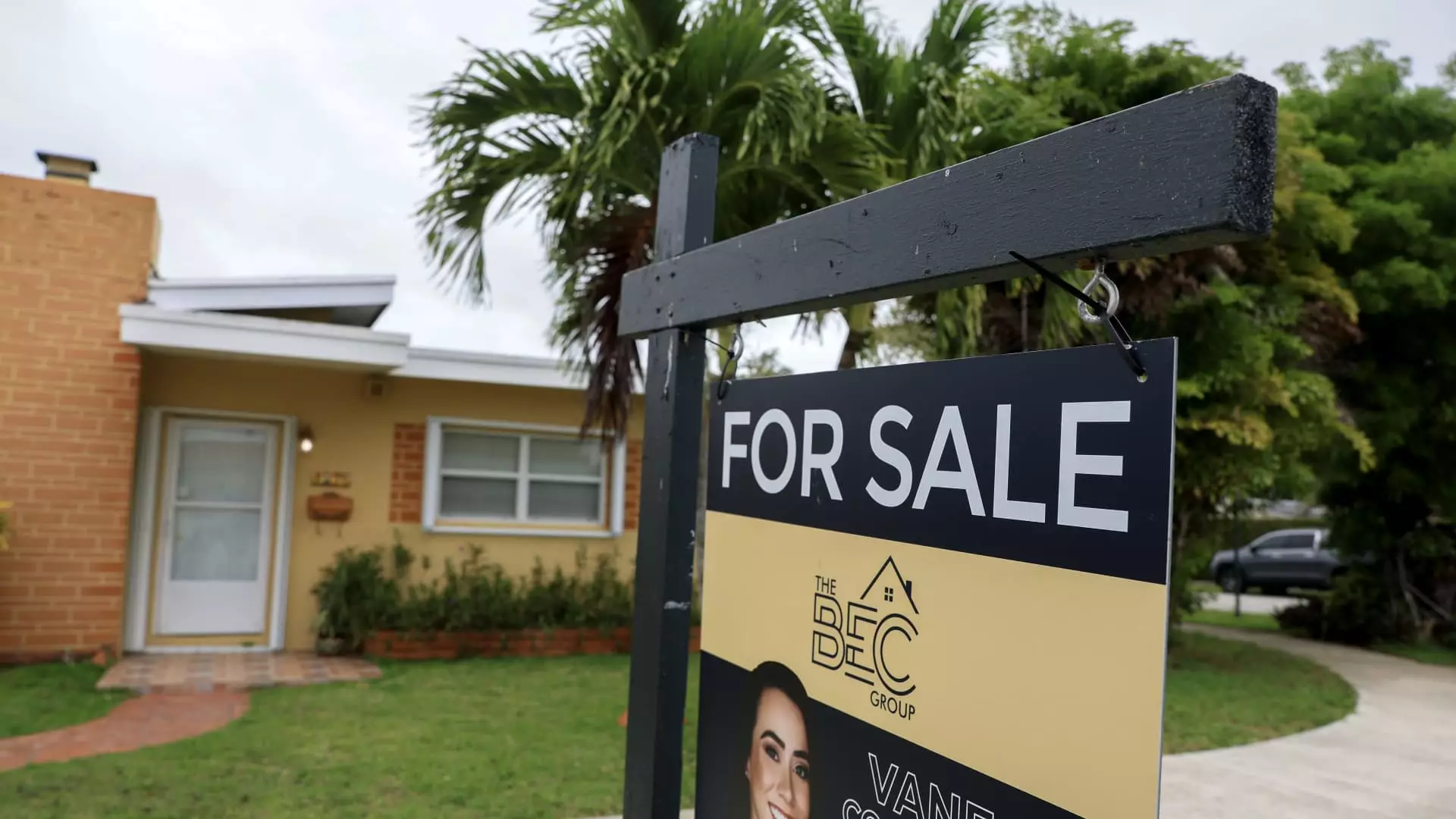In an unexpected twist of fate, mortgage rates have retreated marginally, yet this decline has done remarkably little to ignite the appetite for new mortgages. According to the latest data from the Mortgage Bankers Association (MBA), total mortgage application volume fell by 3.9% last week. This statistic raises pressing questions about the state of the housing market, particularly in a climate where mortgage rates should ideally stimulate growth in purchase and refinancing activities. The reality, however, is starkly different; the market is largely averse to engagement—even with slightly reduced interest rates.
Small Adjustments, Limited Impact
To further dissect the marginal interest rate decline, consider the average contract interest rate for 30-year fixed-rate mortgages, which decreased to 6.92% from 6.98%. This slight dip, albeit accompanied by lower origination fees, has not translated into a significant uptick in demand, particularly for refinance applications. While it’s reassuring to note that refinance activity remains 42% higher than this time last year, it’s crucial to recognize that last year’s rates were just 15 basis points higher. This suggests that despite the marginal rate adjustments, the base volume remains so low that even minor shifts seem magnified.
Joel Kan, an economist at MBA, vocalizes an underlying frustration: borrowers are holding out for a more attractive rate drop. This behavior reflects a deeper, perhaps pessimistic sentiment prevalent among potential homebuyers and refinancers alike, and it also hints at an overarching uncertainty about future economic conditions and monetary policy.
Housing Supply Versus Demand Dynamics
With a 4% decrease in mortgage applications for home purchases, juxtaposed against an 18% increase from the same period last year, one can easily see that the dynamics of supply and demand are at play. It is a critical period for potential homebuyers, many of whom are confronted with a housing market inundated with properties for sale—the highest level in five years. Despite this wealth of options, the sluggish spring season brings into question the effectiveness of current offerings in enticing buyers.
Even with the numbers suggesting more homes are available for purchase, closed sales continue to lag behind last year’s figures. The dilemma is clear: more supply should ideally stimulate higher sales, yet it appears the overarching trepidation surrounding economic conditions is dampening enthusiasm. The specter of fluctuating economic indicators and unresolved inflationary pressures looms large, causing potential buyers to hesitate.
Flat Outlook Amidst Rising Concerns
As we navigate through this period of moderate interest rates and dwindling applications, the mortgage market is fated to remain in a precarious position. The encouraging signs of a more favorable rate environment are overshadowed by a pervasive unwillingness to act. There’s a palpable sense of caution that underscores the housing market, leading one to ponder whether we are witnessing a temporary lull or the onset of a longer-term trend of stagnation.
Such a crossroads carries consequences not only for individual homeowners but also for the broader economy–fluctuations in housing demand can ripple outward, affecting myriad sectors nationwide. Rather than celebrating slight rate drops, perhaps it is time for a broader examination of what makes homebuyers hesitant. If the interest rates continue to be a slim consolation amidst broader economic anxieties, then the mortgage market may need to brace itself for even more turbulent waters ahead.

